Abstract
Objective:
To develop a screening test to detect female college athletes with eating disorders/disordered eating (ED/ DE). No validated eating disorder screening tests specifically for athletes have been available.
Design and Setting:
In this cross-sectional study, subjects from a large midwestern university completed 3 objective tests and a structured diagnostic interview.
Measurements:
A new test, developed and pilot tested by the researchers (Athletic Milieu Direct Questionnaire, AMDQ), and 2 tests normed for the general population (Eating Disorder Inventory-2, Bulimia Test-Revised) were used to identify ED/DE athletes. A structured, validated, diagnostic interview (Eating Disorder Examination, version 12.OD) was used to determine which test was most effective in screening female college athletes.
Subjects:
Subjects included 149 female athletes, ages 18 to 25 years, from 11 Division I and select club sports.
Results:
ED/DE subjects (35%) were found in almost every sport. Of the ED/DE subjects, 65% exhibited disordered eating, 25% were bulimic, 8% were classified as eating disordered not otherwise specified (NOS), and 2% were anorexic. The AMDQ more accurately identified ED/DE than any test or combination of items. The AMDQ produced superior results on 7 of 9 epidemiologic analyses; sensitivity was 80% and specificity was 77%, meaning that it correctly classified approximately 4 of every 5 persons who were truly exhibiting an eating disorder or disordered eating.
Conclusions:
We recommend that the AMDQ subsets, which met statistical criteria, be used to screen for ED/DE to enable early identification of athletes at the disordered eating or NOS stage and to initiate interventions before the disorder progresses.
Keywords: anorexia, bulimia, dieting behaviors, Eating Disorder Examination
Full text
PDF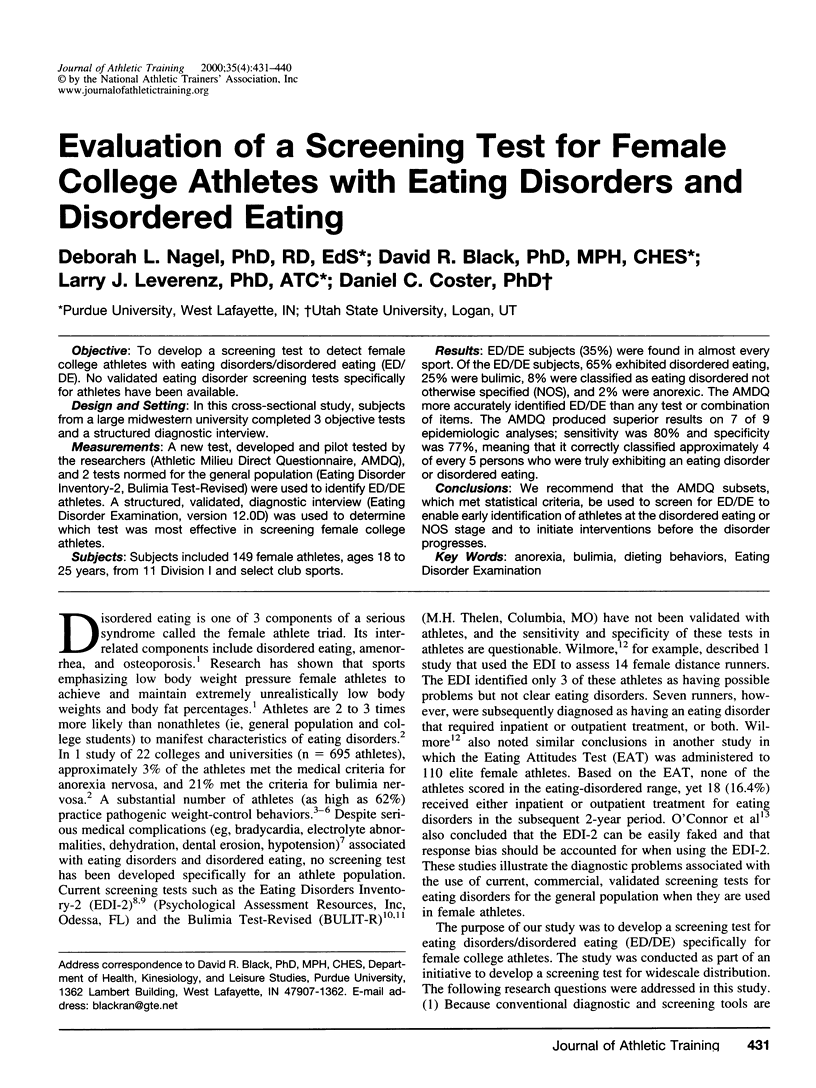
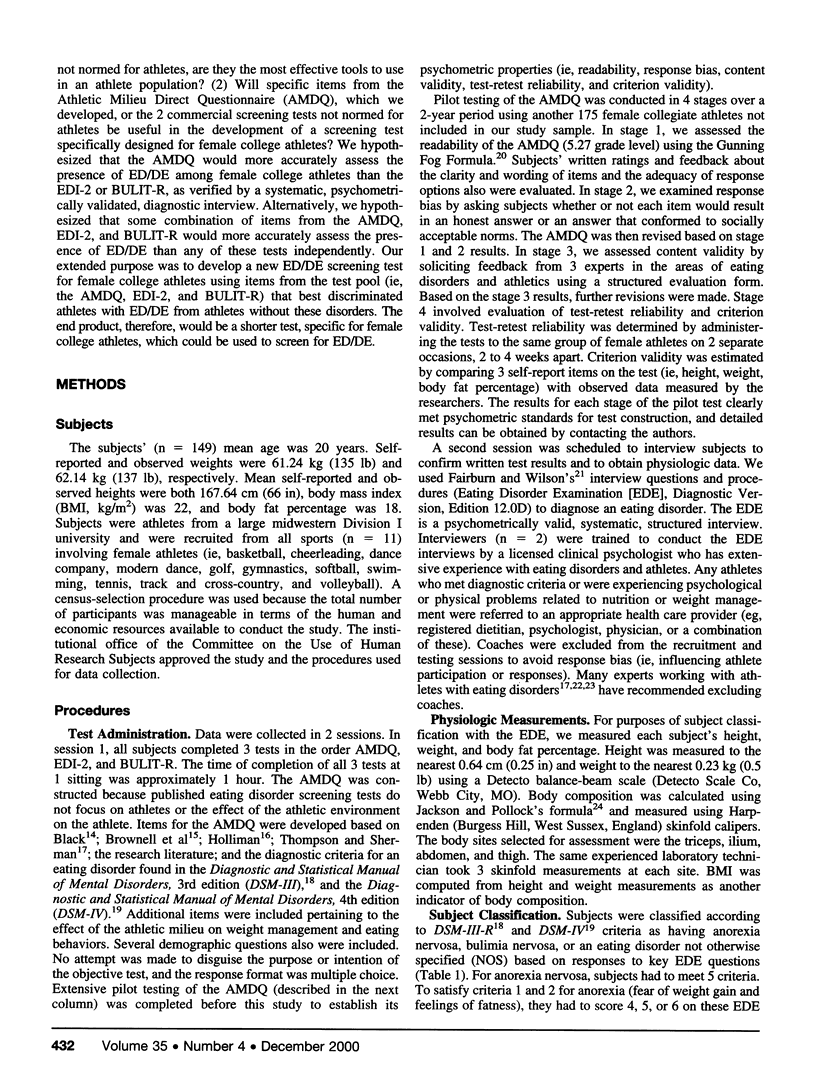
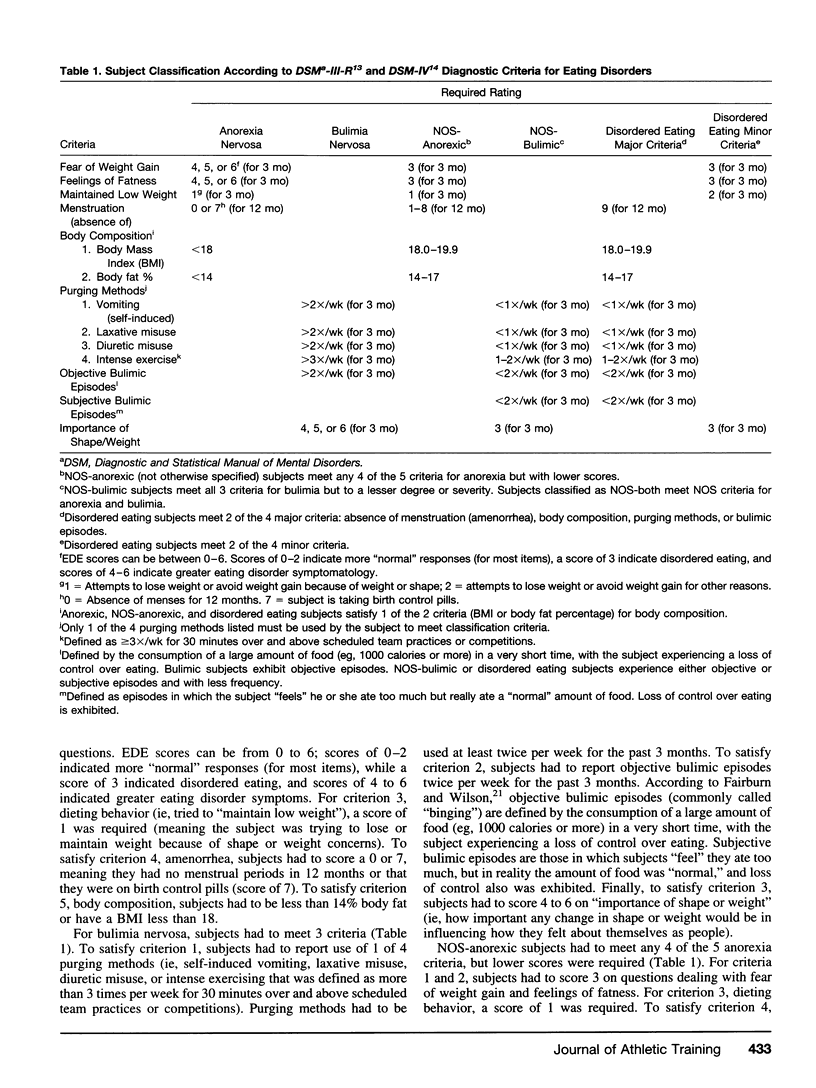

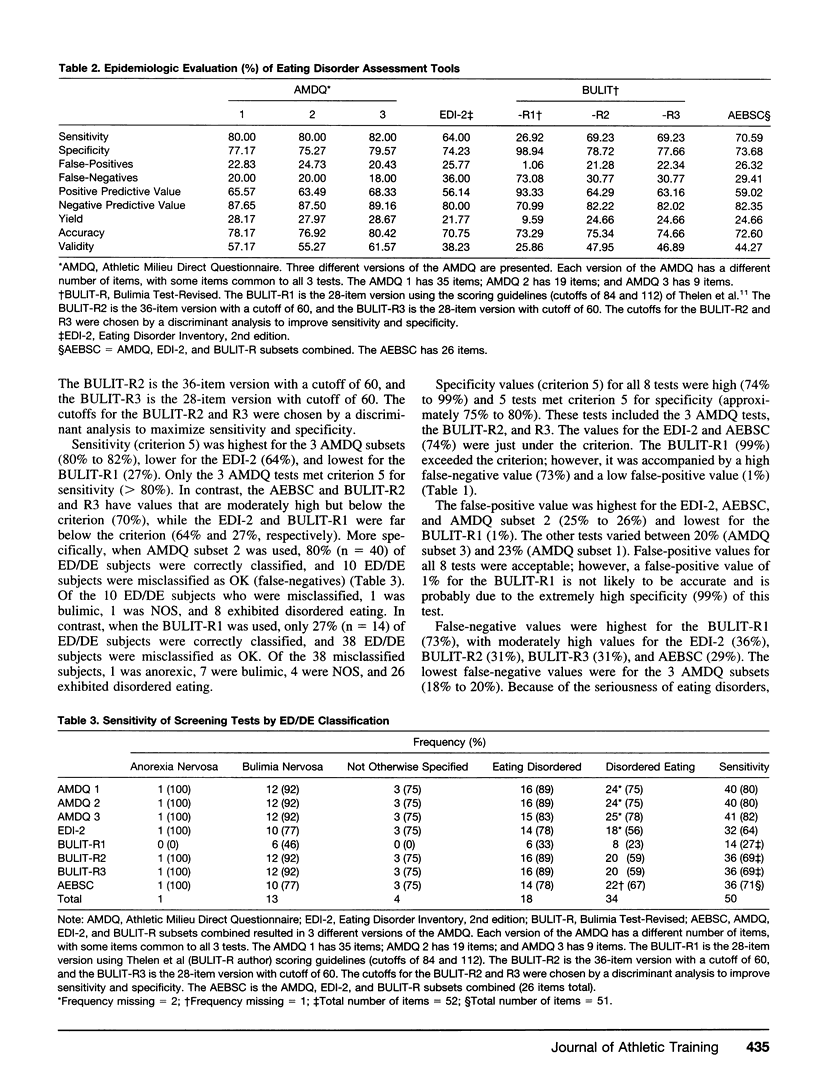
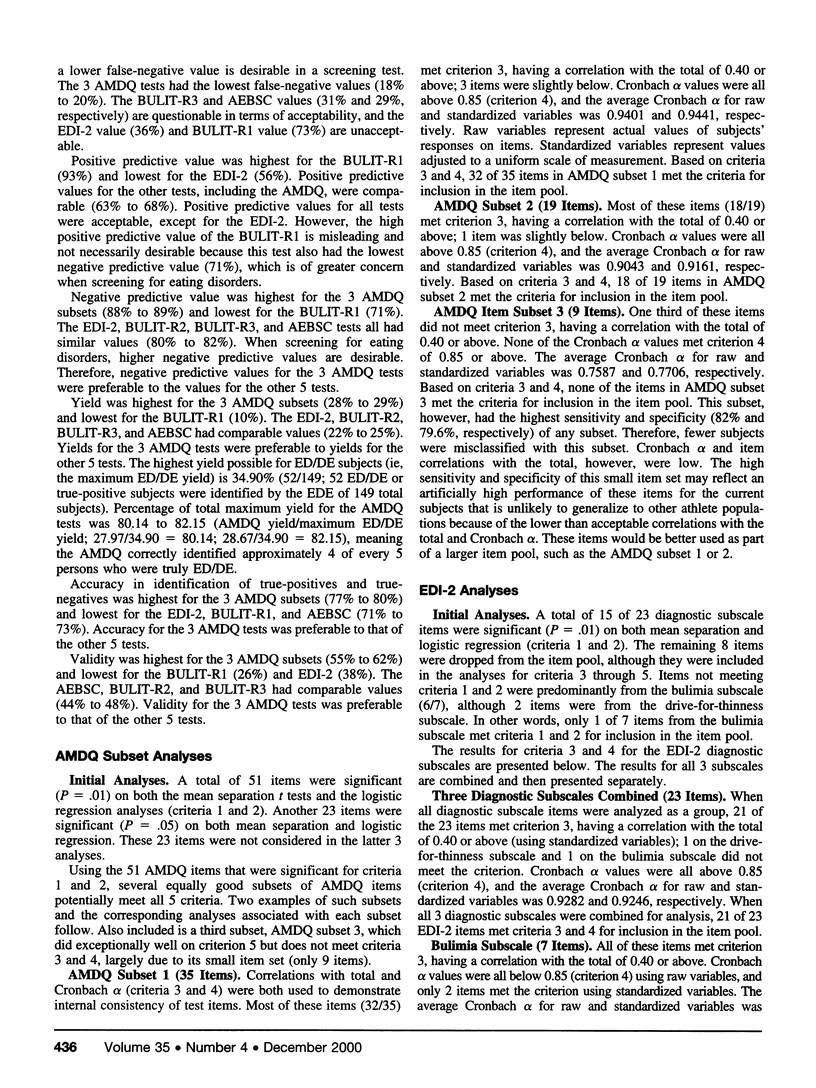
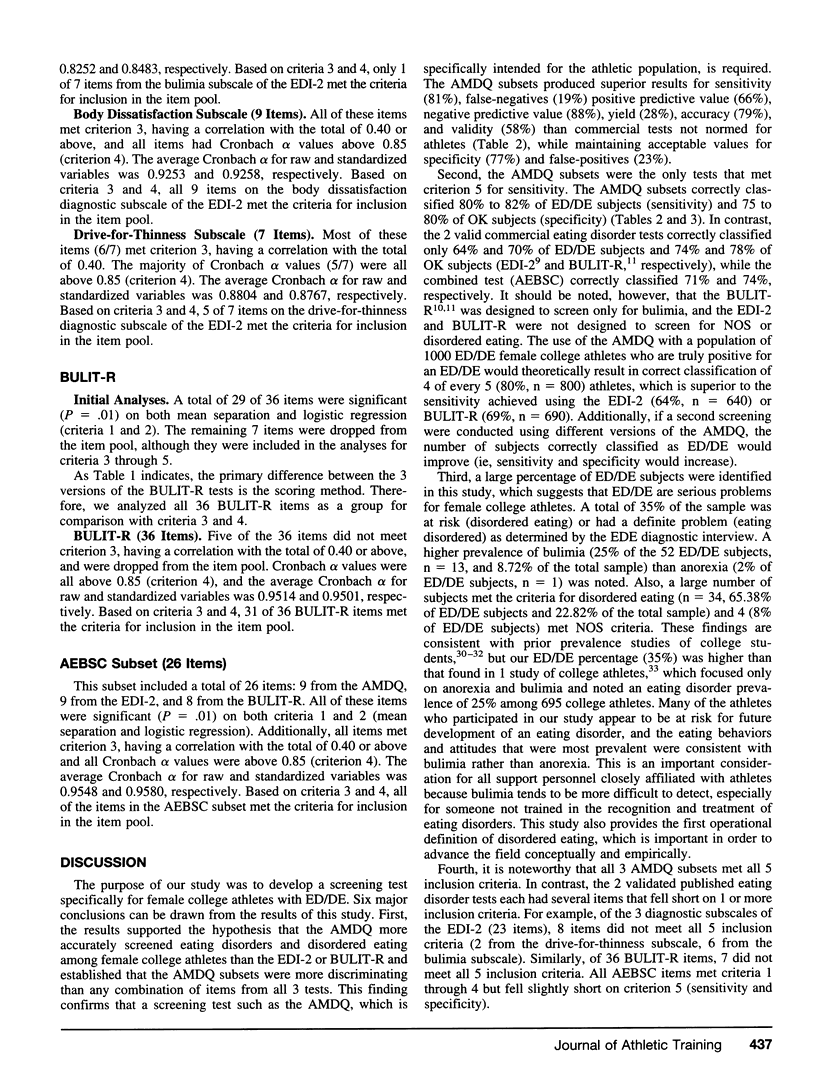
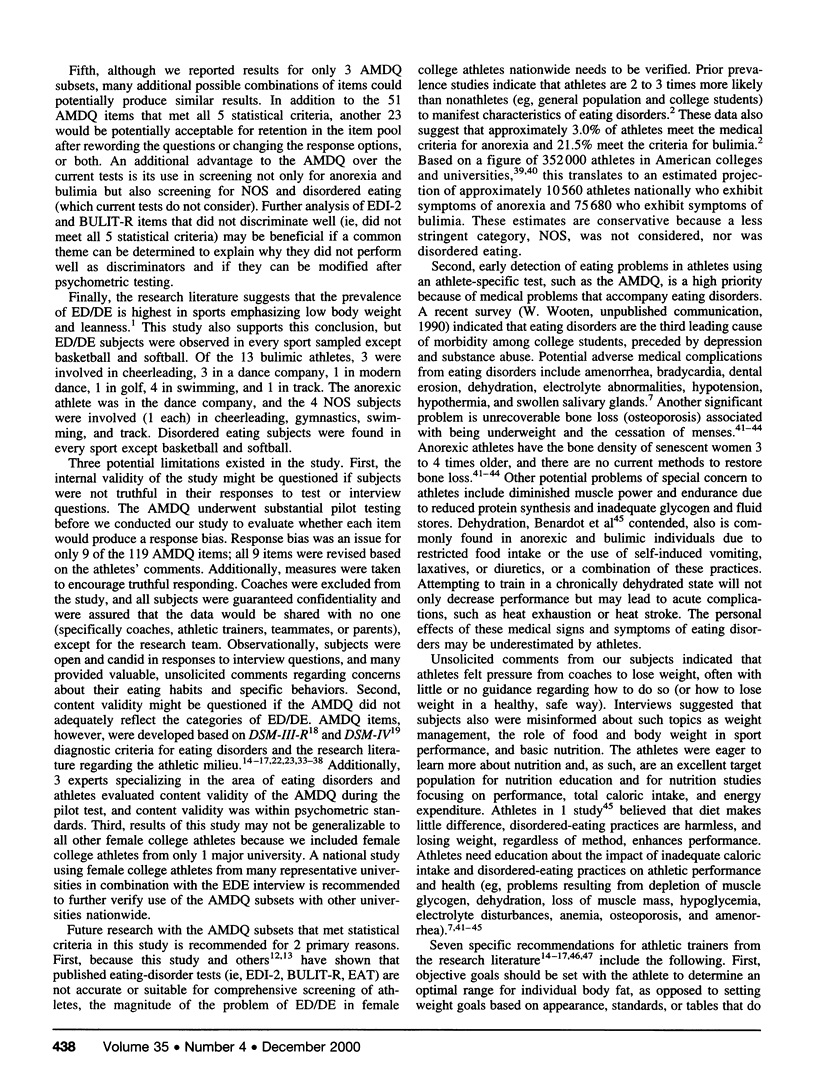

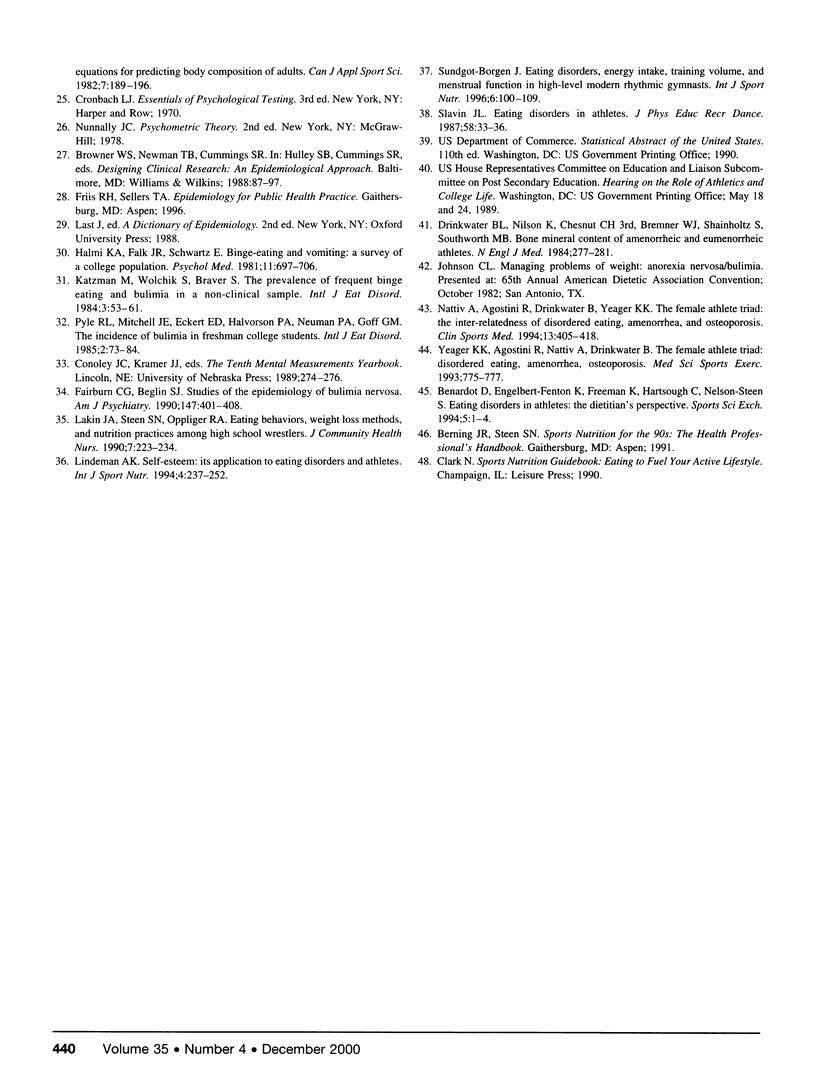
Selected References
These references are in PubMed. This may not be the complete list of references from this article.
- Comerci G. D. Medical complications of anorexia nervosa and bulimia nervosa. Med Clin North Am. 1990 Sep;74(5):1293–1310. doi: 10.1016/s0025-7125(16)30517-x. [DOI] [PubMed] [Google Scholar]
- Drinkwater B. L., Nilson K., Chesnut C. H., 3rd, Bremner W. J., Shainholtz S., Southworth M. B. Bone mineral content of amenorrheic and eumenorrheic athletes. N Engl J Med. 1984 Aug 2;311(5):277–281. doi: 10.1056/NEJM198408023110501. [DOI] [PubMed] [Google Scholar]
- Fairburn C. G., Beglin S. J. Studies of the epidemiology of bulimia nervosa. Am J Psychiatry. 1990 Apr;147(4):401–408. doi: 10.1176/ajp.147.4.401. [DOI] [PubMed] [Google Scholar]
- Halmi K. A., Falk J. R., Schwartz E. Binge-eating and vomiting: a survey of a college population. Psychol Med. 1981 Nov;11(4):697–706. doi: 10.1017/s0033291700041192. [DOI] [PubMed] [Google Scholar]
- Jackson A. S., Pollock M. L. Steps toward the development of generalized equations for predicting body composition of adults. Can J Appl Sport Sci. 1982 Sep;7(3):189–196. [PubMed] [Google Scholar]
- Lakin J. A., Steen S. N., Oppliger R. A. Eating behaviors, weight loss methods, and nutrition practices among high school wrestlers. J Community Health Nurs. 1990;7(4):223–234. doi: 10.1207/s15327655jchn0704_5. [DOI] [PubMed] [Google Scholar]
- Lindeman A. K. Self-esteem: its application to eating disorders and athletes. Int J Sport Nutr. 1994 Sep;4(3):237–252. doi: 10.1123/ijsn.4.3.237. [DOI] [PubMed] [Google Scholar]
- Nattiv A., Agostini R., Drinkwater B., Yeager K. K. The female athlete triad. The inter-relatedness of disordered eating, amenorrhea, and osteoporosis. Clin Sports Med. 1994 Apr;13(2):405–418. [PubMed] [Google Scholar]
- O'Connor P. J., Lewis R. D., Kirchner E. M. Eating disorder symptoms in female college gymnasts. Med Sci Sports Exerc. 1995 Apr;27(4):550–555. [PubMed] [Google Scholar]
- Otis C. L., Drinkwater B., Johnson M., Loucks A., Wilmore J. American College of Sports Medicine position stand. The Female Athlete Triad. Med Sci Sports Exerc. 1997 May;29(5):i–ix. doi: 10.1097/00005768-199705000-00037. [DOI] [PubMed] [Google Scholar]
- Sundgot-Borgen J. Eating disorders in female athletes. Sports Med. 1994 Mar;17(3):176–188. doi: 10.2165/00007256-199417030-00004. [DOI] [PubMed] [Google Scholar]
- Sundgot-Borgen J. Eating disorders, energy intake, training volume, and menstrual function in high-level modern rhythmic gymnasts. Int J Sport Nutr. 1996 Jun;6(2):100–109. doi: 10.1123/ijsn.6.2.100. [DOI] [PubMed] [Google Scholar]
- Sundgot-Borgen J. Risk and trigger factors for the development of eating disorders in female elite athletes. Med Sci Sports Exerc. 1994 Apr;26(4):414–419. [PubMed] [Google Scholar]
- Wilmore J. H. Eating and weight disorders in the female athlete. Int J Sport Nutr. 1991 Jun;1(2):104–117. doi: 10.1123/ijsn.1.2.104. [DOI] [PubMed] [Google Scholar]
- Yeager K. K., Agostini R., Nattiv A., Drinkwater B. The female athlete triad: disordered eating, amenorrhea, osteoporosis. Med Sci Sports Exerc. 1993 Jul;25(7):775–777. doi: 10.1249/00005768-199307000-00003. [DOI] [PubMed] [Google Scholar]


